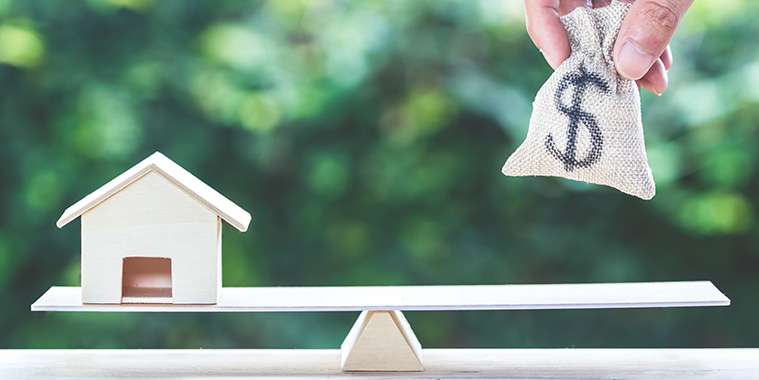Home maintenance costs can add up pretty fast when something goes wrong in a home. You’ve braced yourself for a hefty down payment and maybe some new furniture. But homeownership expenses don’t end there — routine maintenance costs can really add up. Imagine getting socked with a $10,000 bill for roof repair. Are you prepared for that?
It’s important to have a handle on some of the day-to-day expenses you may incur to keep a home in good repair. Keep these costs in mind as you tour prospective homes, too, so you don’t fall madly in love with a property that needs expensive TLC.
In 2009, home economics experts suggested socking away 1% to 2% of your home’s value for maintenance costs. Today, homeowners tend to save 2% to 4%, said Kathy Sweedler, a consumer economics educator. Homes without a mortgage skew higher on savings, which could be because the homes are likely older, she noted.
Create a home maintenance costs rainy day fund
Sweedler said homeowners — especially first-time buyers — should consider their expenses as falling into two categories: startup costs and ongoing maintenance.
Startup costs include one-time purchases of things you haven’t needed before, like a lawn mower or curtains of a certain size.
Maintenance costs cover things like replacing a roof or a broken appliance.
When you consider how much to budget for maintenance, think about what each season demands, and then average the cost over the full 12 months. Consider what you might need to replace or upgrade over the next three, five, or 10 years, and spread those estimates out over months and years, too.
It’s better to put away a little bit each month to cover winterization, for example, than struggle to pay October’s groceries because of the once-a-year bill. Put away an extra $100 a month now, and in five years you’ll have $5,000 when you need it for new windows.
Sweedler suggested putting that cash into a separate savings account earmarked for home maintenance, so you won’t be tempted to spend it on something other than home maintenance costs.
First-time buyers
The maintenance budget can prove especially rough on first-time buyers. Renters don’t have to worry about paying for garbage pickup or a new dishwasher — those things fall to the landlord. But as a homeowner, those expenses fall to you. That’s part of the startup math Sweedler meant when considering your monthly maintenance budget.
“For new home buyers, it’s really hard for people to think about what those big costs would be,” Sweedler said. “I don’t think most people are really planning on that fully.”
Talking with your REALTOR® about the upkeep costs can give you a sense of what to expect once you take the keys. A local home-buying course can help, as can the myriad home-care books on the market.
Return on investment
If socking away extra savings after handing over a down payment feels like a burden, Sweedler suggested looking at it as an investment in home maintenance — not a chore.
“For many people, their home is a large asset, so we do need to, in a sense, reinvest in that asset to keep the maintenance up,” she said. “You want it to be in good shape so you can get full value.”
Plot the future
If you want a more specific saving goal, consider the average lifespan of parts of your home that could add up to big home maintenance costs.
Roofs need to be replaced about every 20 years, depending on the material and the wear and tear. This can be a huge cost, depending on the material and square footage, so when you’re shopping for a home you might want to consider the age and condition of the roof before you decide.
Your home’s plumbing and electricity system need to be kept in good repair as well. Features such as the central air-conditioning and heating systems are key to the comfort and livability of your home; they will require maintenance and possibly replacement.
Consider the lifespan of any additional home amenities. For example, pool care costs money. You may opt to pay for a pool service or service it yourself. In the latter case, you will need to purchase supplies. In addition, the pump and filter will need to be replaced occasionally.
When you buy a home, take some time to sit down, make a list of everything you’ll need to keep up and start estimating some long-term saving goals.
— realtor.com



